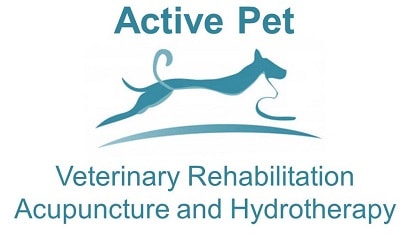How rehabilitation and physiotherapy is used in dogs who have had Legg-Calvé-Perthes Disease
Here is Issy one of our patients using the land treadmill as part of her rehabilitation. Issy had Legg-Calvé-Perthes disease which meant that she had to have the ball of her left hip removed. Legg-Calvé-Perthes disease mainly affects small breed dogs and occurs due to disruption of the blood supply to the ball of the hip. The bone then dies off and the ball of the hip needs to be surgically removed and either a hip replacement is performed or it is left to form a pseudoarthrosis (false joint) and muscle then stabilises the limb. It is really important to start rehabilitation straight after surgery to make sure that scar tissue does not prevent normal movement of the limb especially hindlimb extension.
Issy has a set of exercises at home to strengthen her hindlimbs and to ensure that she keeps as much movement in her operated back leg as possible. The land treadmill helps to encourage her to stretch out her hindlimbs further than if she was just walking along due to the moving belt. We have added a little more challenge by using the Fitpaws bone to strengthen her forelimb, back and tummy muscles at the same time and put more weight onto her hindlimbs…though I think Issy is more focused on giving her tongue and tastebuds a workout!!!


Hi my dog has just had surgery 10 days ago to remove the hip ball..what exercises can I do in the house to get him using back leg
Dear Martin,
Thank you for your comment and sorry to hear about your dog’s surgery; I hope he is recovering well. I would recommend seeing a CCRP, CCRT or ACPAT qualified veterinary physiotherapist. It is really important to get your rehabilitation started straight after surgery otherwise too much scar tissue forms and your dog will never get full hip extension back. Without checking your dog’s pain levels, how much muscle they have and how they are moving it is difficult to advise on exercises. This is where a qualified physiotherapist will help you to organise a personalised program for your dog. Going forwards after the intial rehab program is completed we always recommend regular checkups as the operated leg is now shorter than the other side and this will cause your dog to move differently. We often find sacro-iliac joint and back pain starting to niggle from a few months after surgery. I hope that helps and a list of qualified therapists like myself can be found on the CCRP website at https://shop.utvetce.com/ccrp-united-kingdom. Dr Philippa Mitchell MRCVS, CCRP, GP Cert WVA &CPM.
Hi my 11 mths old dog got perths she had the op but wont put any weight on it keeps it up the vet said she doesnt hve to go bk is the anything i can do thanks kind regards ellen
Hi Ellen, thank you for your message. Do take your dog back to your Vet as there may still be some discomfort or a spur on the bone has grown back, which is causing pain. If these things can be ruled out then do find a CCRP/CCRT or ACPAT qualified physiotherapist to help you encourage your dog to start weightbearing on her leg. If you are near us and would like to come then do get in touch. Fingers crossed she will be using the leg soon. Philippa.